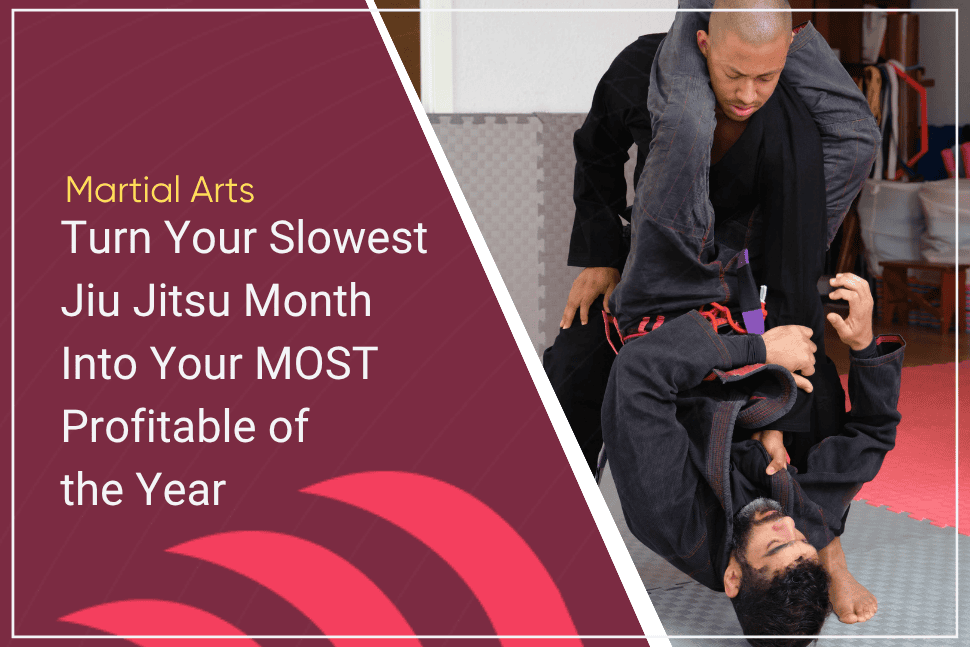Owning a yoga studio can be a rewarding and profitable business venture. If you’ve never worked in the fitness space before, you may be concerned about how to open a yoga studio. Most studio owners get into the business because they are passionate about yoga and sharing the practice with their community. Since the yoga industry continues to grow year after year, studios can also bring in good money for the owners.
What to Consider Before Opening a Yoga Studio
A yoga studio, like any fitness business, starts with passion and a love of the activity. When you are considering opening a studio, you want to make sure that this is a business that you want to invest your time and money into. Expect to be spending hours at the studio, not just running the business but also focusing on the yoga practice.
If you’re confident in your love of yoga, the next step is to consider if this can be a profitable business venture. No matter how much you love something, a business needs to be able to make money (or at least keep itself in operation). Answering these questions can help set you up for success and begin your business plan.
- Where do you want to open your studio?
- Where are competitors located? Are their businesses thriving?
- Do you already have clients? If not, how will you get clients?
- Will you only offer yoga or other modalities?
Startup and One-Time Costs
The most important consideration to make is if the studio can be profitable. Before you start looking at how much money you could make, you need to understand how much money it costs to open and run a studio. On average, the cost of opening a yoga studio is $30,000-$50,000. This amount can vary wildly based on your location and business model.
Your studio will have monthly operating costs, but getting the studio up and running will require a large chunk of money. This initial investment covers securing and renovating studio space, sourcing equipment, executing pre-opening and opening marketing plans, getting insurance, obtaining necessary licenses and permits, and hosting an opening event.
Keep in mind that every yoga studio is going to have different expenses to get open. Some spaces may require extensive renovation. Other studios may need to purchase specialized equipment. Do a cost analysis for your studio instead of using numbers from someone else.
How to Start a Yoga Studio
Setting up a yoga studio takes a bit more work than managing the studio once it is up and running. Knowing everything to expect and how to get your business off the ground will allow you to have a better understanding of the time and financial investments.
Write a Business Plan
Your yoga studio business plan is a summary of all the aspects of your business. This document covers your plans and projections, giving you and any business partners easy access to necessary information.
Some topics to include in your business plan are:
Executive Summary
An executive summary is a quick overview of your yoga studio business plan. It typically includes your “elevator pitch” describing your business. In addition, you can add highlights from the plan that stand out. If you are applying for loans or looking for business partners, they will look to this section for quick information about your yoga studio.
Product and Services
As a yoga studio, your service is your classes (and any additional offerings). Include information about the type of yoga, class schedule, your hours of operation, and any other important details about the service.
You can also include membership and drop-in prices here. If you plan to sell any merchandise in your studio, you can list the products and prices.
Business Operations/Structure
In this section, outline the structure of your business including the chain of command. Are you the studio owner/manager or will you be hiring a studio manager? How many employees or independent contractors will you be hiring? What does the employee schedule look like?
Additionally, add information like who has keys to the studio, pay rates, job expectations, and more. If you have put together an employee handbook, you can include a link in this section.
Target Market
There are a couple of different ways to look at your target market. Some business owners like to imagine their ideal client, the person who the studio is best suited for. While your clients may not look like this target client, it can help move the studio in the right direction.
Another approach is to look at the local market. Once you have your location, you can look at the demographics of the area. What is the average income? What market segments (like middle-class stay-at-home parents) are you trying to target?
When you start creating marketing campaigns and advertisements, you’ll need your target market. By speaking to these potential clients instead of everyone, you have a better chance of bringing the right people into the studio.
Location Breakdown
It is recommended to start larger and then focus on location specifics. First, what town or city do you want the studio to be in? Is there a specific neighborhood in this town?
Once you know the general area for your studio, you can start looking at specific spaces. You’ll first need to consider renting vs. buying. Most yoga studio owners choose to rent their commercial spaces. Yoga studios can be located in strip malls, stand-alone buildings, or within an existing gym space.
In your location breakdown, you can also include necessary renovations or build-out costs to turn the space into your yoga studio. The more specifics you can include, the better.
Sales and Marketing Strategy
This all boils down to how you will bring clients in the door. Currently, internet and social media marketing is the most effective marketing for the cost. Even if you work with a website developer or social media manager, costs are typically lower than purchasing print advertisements.
When it comes to how to open a yoga studio, many studios find success by hosting a grand opening event or offering special opening pricing. You can do pre-sale memberships before the studio opens or offer a deal for the first couple of weeks.
Funding Plan
This section will outline the funding you already have and how much you still need. Include personal investments, loans, and invested capital. In addition to the amount of funding, a breakdown of how the funds are being used for startup and ongoing costs. If you are seeking additional funding, including a cost breakdown and projected break-even date.
Financial Analysis
This section is a detailed summary of all costs and projected income. Include your initial funding and startup starts. From there, compare your ongoing costs with your projected income and growth.
Be realistic and conservative with your numbers, especially when it comes to growth. You don’t want to assume rapid membership growth and not allocate your money appropriately. For lenders and business partners, this will be the most important section for them to analyze if they want to give money to your business.
Register Your Business
First, create a legal entity for your company. Many studio owners choose to create an LLC or corporation. Your yoga studio can use this name or a separate business name (known as a DBA or “doing business as”). This company needs to be registered with the state. If you are not sure how to structure your business, you can consult with a business attorney or CPA for guidance.
Once you have your business formed, it will need to be registered with local and federal agencies for permits and taxes. Check with your local clerk’s office to find out the specific requirements.
Consider Your Funding Options
Since the cost to open a yoga studio can vary from $10,000 to over $100,000, each studio will have different funding requirements.
Self-Funded
Some studio owners are about to self-fund their studio by teaching yoga without a studio. It can be much more cost-effective to rent a space or use a free location (parks or community centers). By self-funding, you are risking your own money on this business venture. On the flip side, it also means that you are in control of the profits and will not need to worry about paying back investors or lenders.
Investors
It is not common for average yoga studios to seek investor funding. The ROI on these businesses is typically not appealing enough for larger investors. However, friends and family may be interested in investing in your yoga studio.
Lenders
Obtaining a business loan is a common funding route used by yoga studio owners. Look into local credit unions or banks, as well as online banking options. Lenders will be looking at your credit score (since the business hasn’t built one yet) and your business plan to decide if they want to work with you. Keep in mind that loans have repayment timetables and interest rates associated with them, so try to borrow more than you need.
Opening and Ongoing Costs
Before you consider your funding options, you first need to establish how much money you need. Estimate and calculate your expected opening costs. Past that, you’ll want to tally up your monthly operating costs until your projected break-even date. Remember to be conservative with your numbers, it is always better to have too much money than too little.
Build a Brand
Your brand includes both visual aspects and verbal/emotional aspects. Your visual branding is the name, logo, colors, and symbols that you use at your studio and in your marketing materials. The verbal and emotional branding includes your values, goals, mission, and slogan. All parts of branding are necessary for creating a cohesive and consistent business image.
Choose a Location
First, look at the geographic location of your studio. What town or city do you want your studio to be located in? Is there a need in this area or do you already have a client base there? Where are competitors located?
Once you’ve narrowed down your location, you can start looking at spaces. A commercial realtor can help you purchase or lease studio space. Find the right square footage and atmosphere for your business. Don’t forget to think about soundproofing if your studio has loud neighbors.
You can also consider using an existing gym space. Cheerleading and gymnastics studios often don’t have classes in the morning and may be willing to rent the space to you. This can save you a lot on location costs.
Source Your Equipment
From a business perspective, it is great that yoga does not require a lot of equipment. Usually, some yoga mats, a few helpful accessories, and a speaker system are enough to run great yoga classes. You’ll also need to purchase everything needed to transform your commercial space into a yoga studio. This can include furniture for the entry area, items for the restrooms, and much more.
To keep track of memberships and classes, it is helpful to purchase yoga studio software. This allows you to see all your clients, class schedules, billing information, and more in one place. Additionally, great gym management software, like Gymdesk, includes a gym POS system (point of sale). This makes selling merchandise or beverages quick and easy.
Hire Your Staff
Since you’ve already outlined your business structure in your business plan, you know how many employees you need to hire. First off, you’ll need fantastic yoga instructors. These instructors will be the face of your business as they lead your classes. Your yoga teachers need to have completed reputable yoga teacher training. Look for instructors who are certified through the Yoga Alliance of America.
In addition to yoga teachers, you might want to hire additional staff members. A bookkeeper or CPA can help with your finances. A studio manager, front desk attendant, or assistant may be necessary for your business. Some studios also like hiring a cleaning company to handle the restrooms and floors.
Set a Marketing Strategy
Pre-opening marketing can bring in a ton of clients before you even open your doors. Build your online presence with a website and social media accounts. You can also participate in local events or offer special pricing for early sign-ups. Most marketing is done online these days, but your marketing strategy may include flyers or mailers.
Common Reasons Why Yoga Studios Fail
Bad Staff
As the studio owner, you may not be present in the studio at all hours. This means you need to have staff members who embody the values of your studio. Knowledgeable and fun instructors make classes enjoyable. All staff should be able to assist clients and answer any necessary questions.
Remember that “bad” staff aren’t always bad because of their work ethic. As the studio owner, you should provide them with comprehensive training and support so they can succeed.
Insufficient Marketing
Even the best yoga studio will fail if no one knows it is there. You want to be able to reach your target market with effective communication about your services and energy. People know what yoga is, so you need to convince them why they should come to your studio specifically.
Incorrect Spending
Use your funding wisely. Each business has items to splurge on and items to save on. It comes down to your business model and clientele. Frivolous spending is the quickest way to run out of money and run your business into the ground.
Average Cost of Opening a Yoga Studio
The average cost of opening a yoga studio is $30,000-$50,000. Many successful studios have been able to open for less money because of their scale and geographic location. Expensive locations, like New York City or Chicago, may require more money to open due to real estate and construction costs.
Are Yoga Studios Profitable?
A yoga studio can be a profitable business when it is located in the right place and managed to the right scale. Consider a studio that charges an average of $10 per class. The studio has three classes in the morning and two classes at night. Each class has around 10 students. That is a total of $500 per day (more than $175,000 annually). With reasonable operating costs, this is a great business venture for a solo owner.
Is It Worth Opening a Yoga Studio?
It depends. Like most fitness businesses, yoga studios are typically opened out of passion. To determine if it’s worth it, you’ll need to decide how much money you want to make versus how passionate you are about yoga. Sometimes, people will choose lower income to be doing something they love.
Should You Join a Yoga Studio Franchise?
The benefit of opening a yoga franchise location is having the support of an established company and having a recognizable brand. They have already a proven business model so your risk is mitigated. However, you will still be expected to contribute an initial franchise fee (basically a startup cost) and they will receive a portion of the profits.
Summary
The steps for opening a yoga studio are not that different from opening any other fitness business. Since yoga requires very little equipment, you can expect lower startup costs than other gyms or fitness centers. After putting together your business plan and securing funding, you will need to find your studio location and hire yoga teachers. A marketing plan and sales strategy will allow you to find your target market and bring them into your studio. Once up and running, your yoga business will be smooth sailing.
 Gym Owner Statistics: The State of Gyms, Member Trends, and Usage Data
Gym Owner Statistics: The State of Gyms, Member Trends, and Usage Data




 EN (English)
EN (English)
 JA (日本語)
JA (日本語)